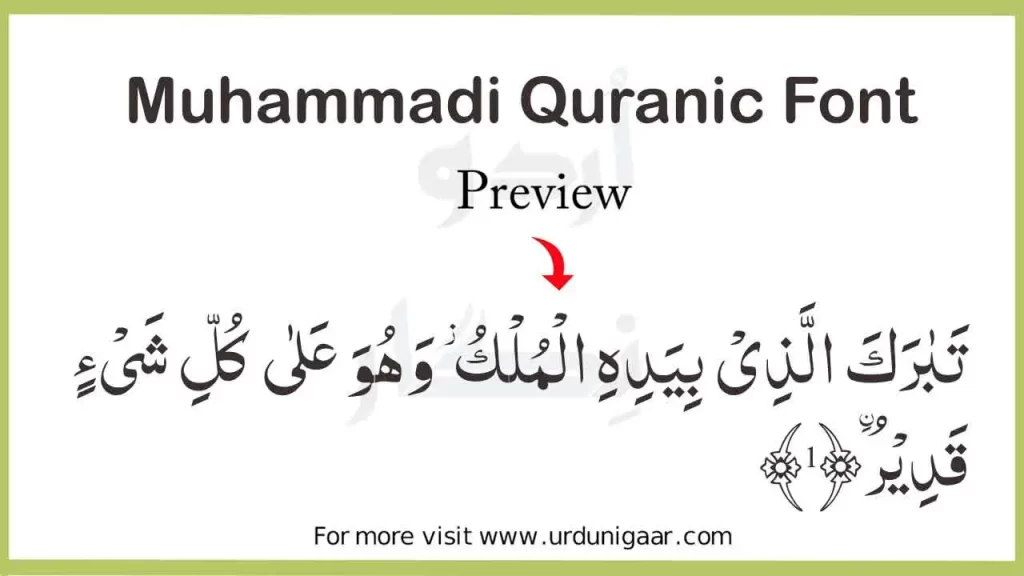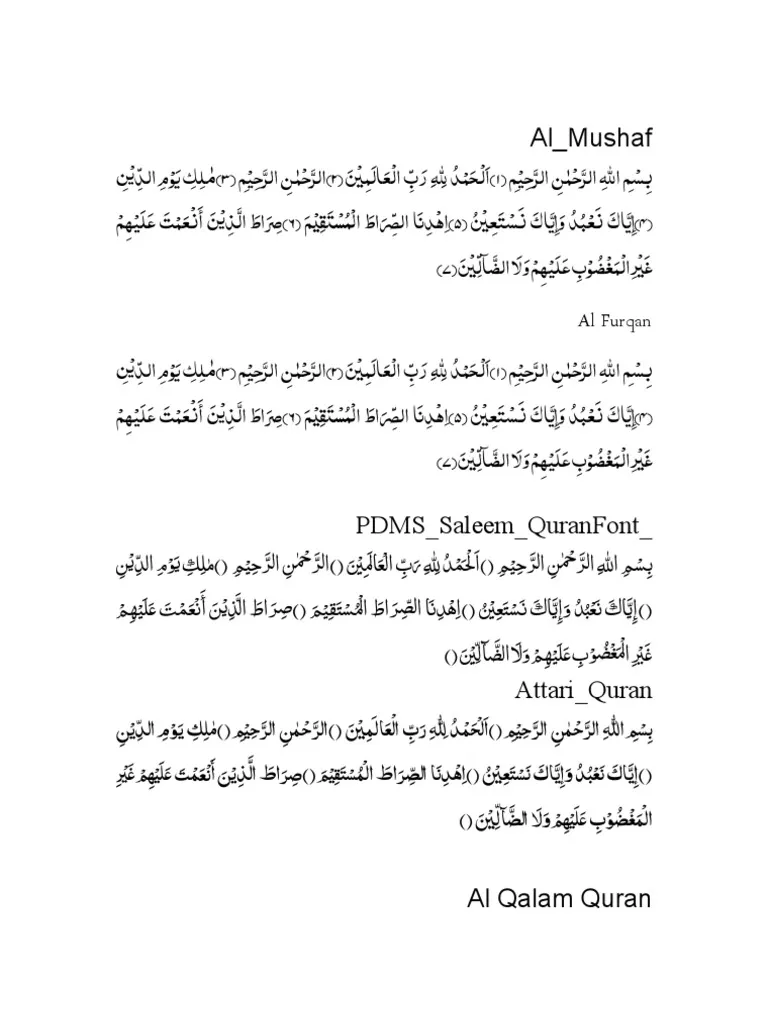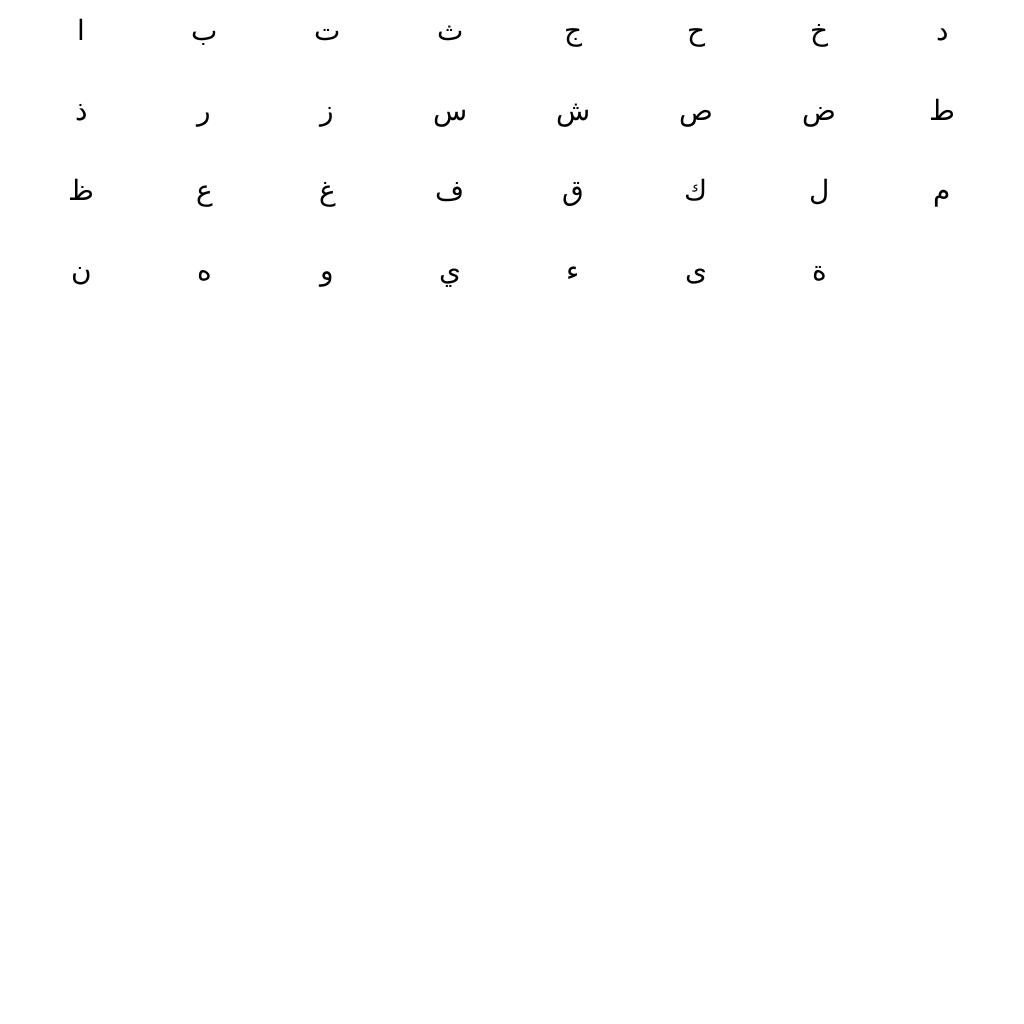
Download Muhammadi Quranic Font


The Muhammadi Quranic font is a fitting representation of the intricate relationship between beauty, culture, and spirituality in Islamic calligraphy. It is rooted in the rich tradition of Arabic writing and driven by the holiness of the Quran. The font is the fitting union of artistry and religious piety. In this, we examine the intricacy of the Muhammadi Quranic font, following its history, examining its design considerations, and looking at its applicability in the context of Islamic tradition and contemporary use.

Some Important Things About Muhammadi Quranic Font
In this example, each row represents a different aspect of the Arabic alphabet:
Letter: Representing a letter of the Arabic alphabet.
Arabic Script: The equivalent Arabic letter in Quranic script
Transliteration: The transliteration of the Arabic letter into Latin script for pronunciation assistance to learners.
This three-row table provides the precise Arabic alphabet in Quran script and its transliteration to assist students in pronouncing the letters accurately. It will be useful for beginners and Arabic students to become familiar with the alphabet in the Quranic script.
Primarily, the Muhammadi font portrays the heritage of Islamic calligraphy, which has been sustained for centuries by craftsmanship and spiritual atmosphere. Calligraphy has been an honored art in the Islamic realm, which preserved and spread the noble Quran, held sacred as the literal word of Allah as it was revealed to Prophet Muhammad (PBUH). Aesthetic beauty accompanied the religious status of calligraphy and, over time, advocated numerous various styles of scripts and typographic forms.
Many script styles have developed within the realm of Arabic calligraphy. Every style has its unique features along with its background. Muhammadi font is a part of the Kufic calligraphic tradition. That would be one of the oldest and most respected traditions regarding script style in Islamic art. Kufic is a style rich in geometric, angular forms, blunt stroke explicitness, and little ornamentation. Probably among the most brilliant and broadly circulated hands used during the early centuries of Islam, it appeared in architectural inscriptions, manuscripts, and decorative objects and bent its mark on Islamic visual culture.
The Muhammadi font is the epitome of fusing tradition with modernity, where the classical calligraphic forms’ influence and the contemporary typographic principles are integrated into it. It has been crafted with symbolic letterforms that are meticulously designed to achieve the elegance and agelessness of legibility required in reading Quranic verses clearly and respectfully. Attentive detailing is executed in each stroke, symbolizing masterful craftsmanship and an attitude of attention to detail characteristic of Islamic calligraphy.
Among the unique features of the Muhammadi Quranic font is its adherence to the principles of Tajweed-the set of rules that address the pronunciation of the Quran. As a standalone practice, Tajweed has rules of pronunciation, articulation, and intonation that guarantee that the Quran will be read correctly and beautifully. In the font’s design, there are subtle details that enable the facilitation of Tajweed through such mediums as extended strokes, diacritical marks, and ligatures, which enhance the capacity to articulate and melodically recite the Quran. Aside from the immediate gratification of visual beauty, Quranic Muhammadi font plays a very functional purpose in the digital era, where religious texts are spread through diverse means and media. With the immediate availability of Muhammadi in digital format, it can be easily used and therefore utilized in whatever type of application, website, or electronic device that contains Quranic content, giving a reader the opportunity to view the holy book visually in the most immediate and interactive way possible. Printed or on the web, the Muhammadi Quranic font gives traditional solidity to the Quranic message in its script, which by nature brings believers closer to God’s message.
Muhammadi Quranic font is yet another instance of ensuring continuance of culture and innovation in Islamic calligraphy through expansion of the limits of food for text in newly sought-after styles. Its availability in styles and weights provides a wider array of applications in design scenarios for multiple tastes and typographic requirements. From formal publishing and educational materials to vibrant, expressive multimedia presentations, Muhammadi font is the answer to making Quranic beauty and sacredness accessible to a global audience. The Muhammadi Quranic font is a standing testimony to the eternal tradition of Islamic calligraphy, symbolizing the crossroads that art, culture, and spirituality have come to on typography. Rooted in the tradition of Kufic script and guided by the principles of Tajweed, this font epitomizes the timeless beauty and profound significance the Quranic script is endowed with. Due to its intricate design and wide availability, the sacred text can be kept within reach of the followers. It allows maintenance over years and regions of the feeling of reverence and connection to the divine message of Islam. As a beacon of artistic brilliance and religious devotion, the Muhammadi font is an inspiration that enthralls audiences with its timeless grace and spiritual resonance, continuing to enrich the visual legacy of Islamic calligraphy for future generations.

AoA, my name is Abd al-Rahman, and my vision is to spread the knowledge of the Quran to everyone. I am proud and tall while standing as your trusted mentor on the journey of learning and memorizing the Holy Quran. I, along with a committed team of Islamic teachers, am bound to provide an easy online facility for Islamic studies and Hifz programs.

